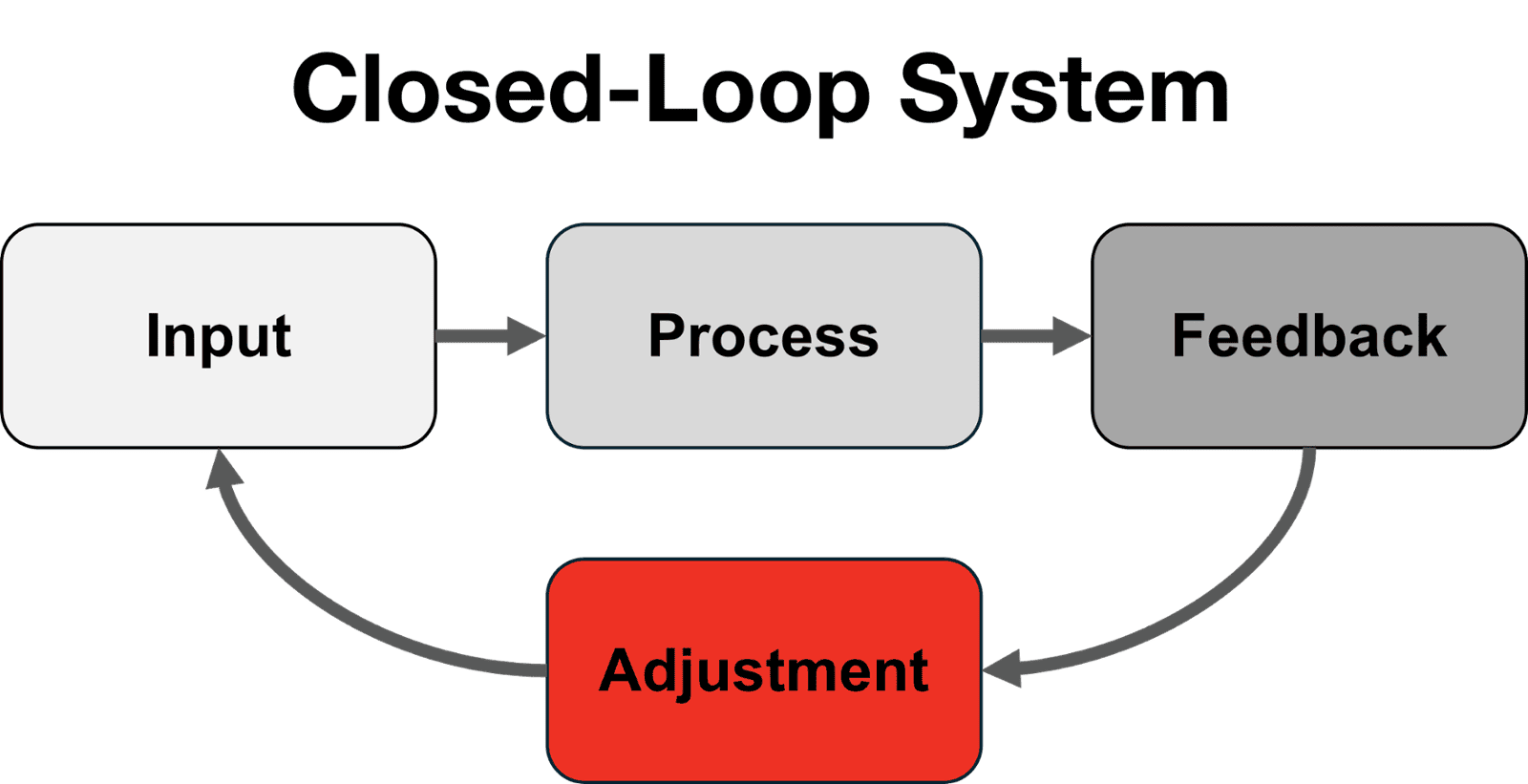Modern engineering practices often emphasize iterative design processes, where feedback continuously informs the development cycle. This approach can be likened to a closed-loop system—a concept borrowed from control theory that emphasizes self-regulating mechanisms through feedback. In the context of software and hardware development, treating the process as a closed-loop system ensures adaptability, efficiency, and alignment with user needs.
What is a Closed-Loop System?
A closed-loop system relies on feedback to automatically adjust its operation. For instance:
Input: Initial specifications or requirements.
Process: Development and execution of tasks.
Feedback: Insights from testing, user feedback, or performance metrics.
Adjustment: Refinements to design or implementation.
This cycle repeats, ensuring the final product evolves with accuracy and quality in mind.

Closed-Loop Framework in Development
1. Inputs: Requirements Gathering
The system begins with input—market analysis, stakeholder requirements, and technical constraints. These define the starting point for both hardware and software teams.
Key components:
User stories and personas (software).
Functional and non-functional specs (hardware and software).
Compatibility matrices (hardware-software interfaces).
2. Process: Collaborative Development
Software and hardware development processes follow distinct paths but must integrate seamlessly:
Hardware: Circuit design, prototyping, PCB layout, and manufacturing.
Software: Agile sprints, CI/CD pipelines, and modular codebases.
Synchronizing timelines between hardware and software teams ensures design dependencies are met.
3. Feedback: Testing and Validation
Feedback loops form the backbone of the closed-loop system:
Hardware: Environmental testing, thermal analysis, and EMI/EMC compliance.
Software: Unit tests, system integration tests, and UX feedback.
Cross-disciplinary validation (e.g., firmware running on prototypes) ensures system coherence.
4. Adjustment: Refinements
Feedback triggers refinements:
Hardware teams may tweak components for better performance or manufacturability.
Software teams address bugs, optimize performance, or adjust features.
Tools like version control systems (Git) and product lifecycle management software (PLM) maintain coherence between iterations.
Benefits of a Closed-Loop Approach
Improved Quality: Continuous feedback reduces the likelihood of major flaws.
Enhanced Collaboration: Teams gain visibility into each other's workflows, breaking down silos.
Flexibility: Adaptive systems can pivot based on evolving requirements or unforeseen challenges.
Cost Efficiency: Iterative design reduces the risk of expensive overhauls late in the development cycle.
Challenges in Closed-Loop Systems
Data Overload: Effective feedback management is crucial; too much data can bog down the process.
Synchronization Issues: Hardware often has longer iteration cycles than software, potentially causing misalignment.
Interdisciplinary Expertise: Bridging hardware-software gaps requires skilled professionals fluent in both domains.
Best Practices for Closed-Loop Development
Adopt Integrated Development Tools: Unified platforms like MATLAB-Simulink, Ansys, or cross-disciplinary tools like Jenkins and Jira bridge the hardware-software gap.
Emphasize Prototyping: Hardware prototypes enable early software testing, reducing feedback latency.
Leverage Digital Twins: Simulated models of hardware components allow software testing even before physical prototypes exist.
Ensure Clear Communication: Regular stand-ups and review meetings foster alignment.
Conclusion
Viewing software and hardware development as a closed-loop system transforms the process from linear and reactive to dynamic and responsive. By integrating continuous feedback, development teams can produce more robust, user-centric solutions. As systems grow increasingly complex, adopting this iterative mindset ensures that engineering disciplines stay synchronized in the fast-paced tech landscape.



